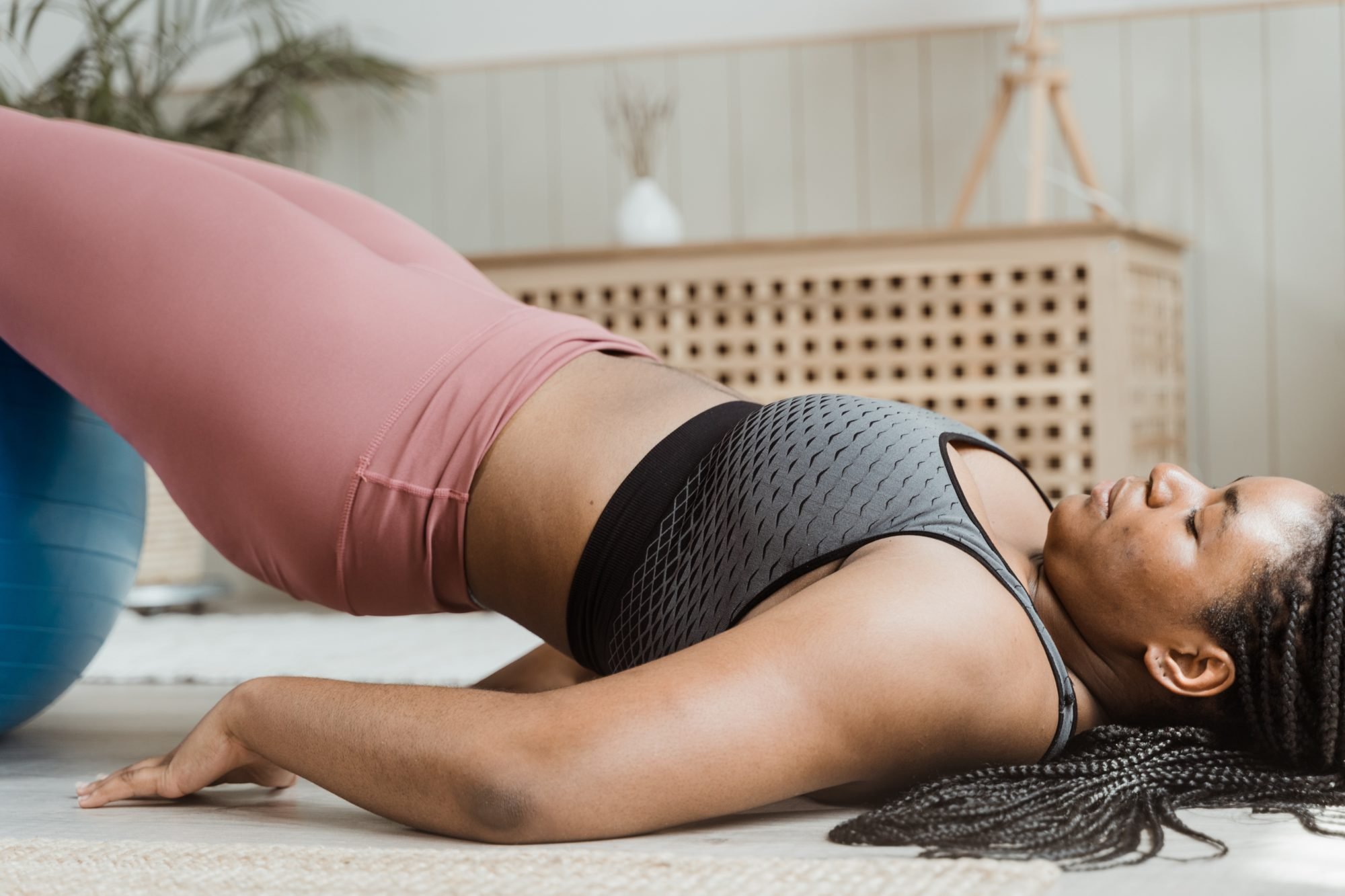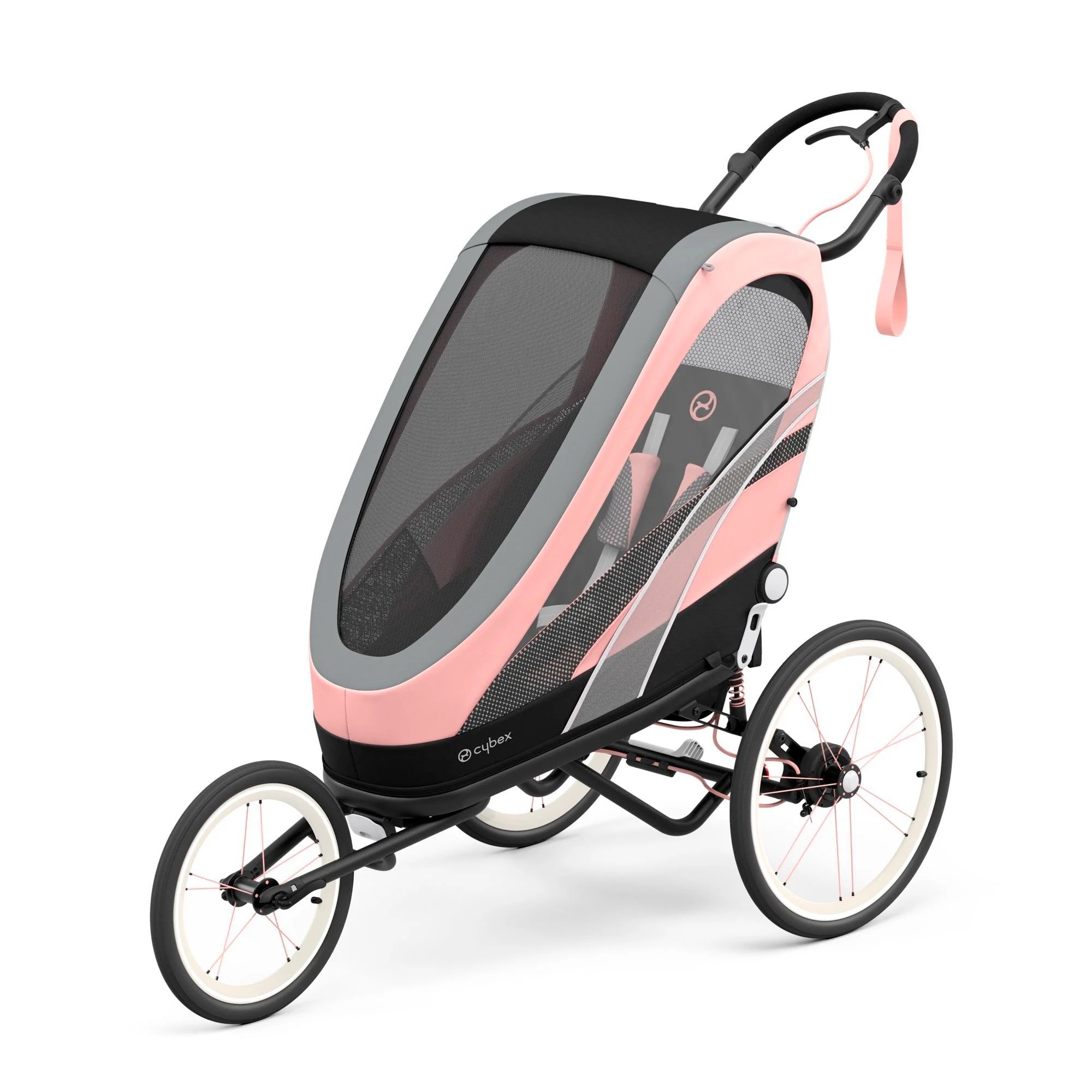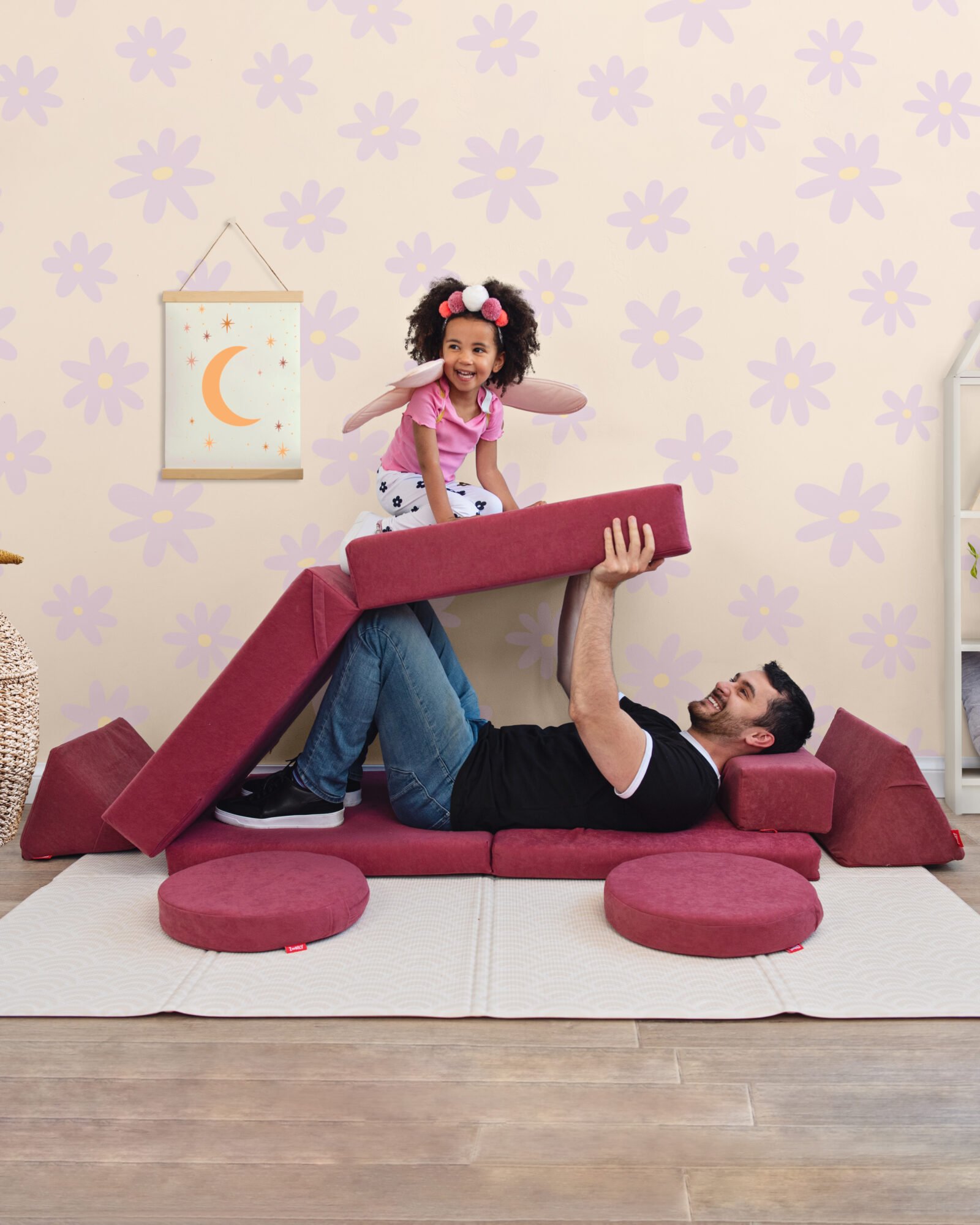Bundle Bed: Family Spy Club Review
We are constantly on the move at the moment - I think having been locked down for so long we have made the most of visiting friends, family and taking all opportunities for grandparents to take care of our small person (night off anyone?!)
We first came across Bundle Beds via a friend and they had come highly recommended - I had been curious to try one for my daughter (4yrs old) and see if it solved the usual dilemma of - where should she sleep when we are away.
Options usually consist of:
Bed in another room (often meant a challenging bedtime of her telling us she’s scared in a new bed / room and one of us having to camp on the floor until she was asleep - slightly dampens the evening…plus the legitimate “will she fall out” query - which she often did…)
Cushions from the sofa dragged upstairs and pieced together with a sheet on top (usually these part ways in the middle of the night courtesy of a wriggling child, leaving a crevice and child waking up with their bottom stuck down the gap. In addition to this the adults have no sofa cushions for the duration of their stay)
Third option is drag mattress from option 1 into our bedroom. Generally heavy / won’t fit and frankly a colossal hassle)
Bundle Bed Assembly
The bundle bed arrived and assembly was pretty straight forward. At one point I contacted owner Lucy, who was super helpful and quick to reply - as I went into full baby brain and couldn’t get my mattress to slot in the mattress sleeve. Two easily resolved errors and good to know for anyone else who is as inept at self assembly as me - un-Velcro the top sheet to make space, and make sure you fully inflate the mattress. This way it fits super snug - and ta da! It even came with a little cardboard box as part of the packaging that doubled up as a castle which my daughter loved. I personally appreciated that all packaging for the bed, including the plastic cover, was fully recyclable.
We opted for a “Tot to Ten” bed with bumpers (negates the falling out the side, which my child is well versed in!) This is suitable for toddlers through to age 12 so it has a huge amount of mileage in it.
Bundle Bed Bedding
The sheets it came with are incredibly soft 100% jersey cotton. No expense has been spared here in manufacture as it would have been easy to put in cheap scratchy bedding. I LOVE this about the brand, no corners have been cut and you’re getting a great quality product.
One thing to note is you only have one set of bedding included with purchase - but you can buy extras separately, and I’d probably recommend this as if your little one has a night time wet accident while away you’ve got back up. There is also a waterproof sheet available to add on which is a big bonus and my experience was that the bedding washed well and stayed really soft (all bedding is machine washable).
There are two colour ways, the Adventurer and the Space theme. Space was a big hit for us (coincided well with learning our planets, so lots of squeals of joy for Saturn when the duvet was unveiled.)
Bundle Bed - First Night
Bundle Bed - is it worth it?
The first night we road tested the bed was at home which tiny person was delighted about. Our house is not the warmest at night but the 15 tog duvet was fantastically warm and I did check her late into the evening and she was toasty. This is great to know for those chillier camping trips - but equally, a summer duvet is available to purchase separately during the hotter months.
One thing to note is my child is generally not a great sleeper, and usually gets up once or twice a night. I’ll state my disclaimer here as a bed does not guarantee a child to sleep through the night - but we were pretty chuffed to wake up in the morning having realised we got through a whole 11.5 hours with no wake ups while she was in the bundle bed. I won’t count my eggs before they’ve hatched but the second time the bed got rolled out during a sleepover with her grandmother, we had reports of the same - a full nights sleep. I’ll leave that there…but it’s worth a whirl if you’re short on shut eye!
Four year old feedback
I asked my daughter what she liked about the bed and she told me:
“I like the planets and how many there are.”
“I like the squashy side to snuggle.” (Bumpers!)
“I want to take this to wonderland when I visit the princesses.” (She refers to Disneyland here, which seems to be advertised on a loop in our household - so looks like we’re going!)
All in all she seemed to give it a big thumbs up.
Bundle Beds - Worth it?
This bed retails at £200, plus extras - bumpers for instance were an additional £50. This feels an investment to me - the fact that we have 8 more years use of this plus a second child will use it, means it certainly offers value for money. Something to point out too is that often European holidays will charge per additional bed in your room - the bundle bed totally negates this so if you add up those costs for holidays over 8 years +, you are certainly breaking even, if not saving.
Mostly though - it’s the total convenience of literally rolling up a bed, and rolling back up. I’m very impressed with it and would certainly recommend to any families who are out and about regularly. The next time it will make an appearance is dinner with friends in a weeks time, when we will be putting her to bed in the evening before the stealth transfer into the car later on….sadly the bundle bed can’t help with that nail biting manoeuvre but for everything else, go wild 🙌
Returning to Exercise after Having a Baby - Should I hit the gym on holiday?
Knowing when and how to return to exercise after having a baby is a confusing and daunting challenge for many new mums.
Although this topic seems not strictly travel related - often on holiday we are faced with the dilemma of utilising the super smart gym (would be a waste not to?) or the fun looking classes - yoga anyone? Aqua Aerobics? But if you’re on a postpartum journey and unsure if you’re ready, its worth reading this advice and getting a gauge on where you’re at personally and where to make a healthy start.
On the one hand, studies have shown that postnatal exercise has a positive impact on a new mother’s mental health and can reduce the onset of postnatal depression. However, concerns over pelvic floor health and overall postanal recovery can make new mothers feel anxious and cautious about pushing themselves too far and too soon.
Add to this the challenge of actually finding the time and energy to exercise with a new baby, and you can easily see how popping on the running trainers and heading out for a jog is not the carefree and spontaneous activity it used to be pre-baby!
To help you assess all the factors that should be considered when deciding on the right time to exercise after having a baby, we’ve pulled together some expert advice from our trusted team of Physiotherapists, Nutritionists, Postnatal Fitness Instructors and Pilates Instructors to help you construct a postpartum fitness routine that’s right for you and your body.
When can I exercise again after having a baby?
“Returning to exercise after having a baby has so many benefits for our physical and mental health, however it can be hard to work out where to start, “ says physiotherapist Clare Bourne.
“My advice is to remember that the initial stage of returning to exercise may feel slower and more like rehab than what you are used to, but slow and steady really does win the race.
Though we may hear of needing to wait 6 weeks before restarting exercise, this isn’t a definitive cut off when we are no longer healing or recovering. This is just the timescale of soft tissue healing. I prefer to view it as a continuum from when we birth our babies until we are back to what we love, and this timescale will be different for everyone.”
Rosie Cardale from the Mummy MOT says, “It’s important to remember that no matter how fit you were before the birth of your baby, it is your pelvic floor, back, and pelvis that you are trying to rehabilitate and protect.
A return to exercise too early can cause immediate or long-term problems to these areas that may, in some cases, be irreversible. Common problems that can occur include musculoskeletal pain and dysfunction, urinary incontinence, abdominal separation, and pelvic organ prolapse.”
Should you use the gym on holiday?
Creating a gradual fitness plan
“Start with deep breathing and pelvic floor exercises in the early days and weeks, alongside short walks,” advises Clare.
“Then once you reach six weeks, start to think about bodyweight movements, like squats and lunges, postnatal pilates or finding a postnatal exercise programme.
There is no rush and don’t compare yourself to anyone else because everyone has their own experience and story. It is important to listen to our bodies and take note of any symptoms, such as urine leakage, or heaviness in the vagina or joint pain.”
Gentle exercises like yoga and pilates can be a great way to regain strength and build up your confidence again, without pushing yourself too far.
“In a Pilates session we focus on the pelvic floor and any ab separation you might have,” says Nathalie Clough, Pilates Expert.
“If mothers had a C section, the recovery and exercises after can be very different to a vaginal birth. I recommend trying to allocate yourself time without any distractions if you are going to look at moving. This way you can fully focus on yourself and your needs at that time, which is so important for any recovery.
Little and often is my motto. This obviously works well when trying to fit in some exercises in between feeding, sleeping and any other schedule you might have. That way you can monitor what might be too much, or too little and gauge how you want to move next time you exercise.”
Nathalie offers in person and online 1:1 pilates packages. Click the links for more information if this is something you’d like to build into your postpartum exercise programme.
Building up to high impact exercise
For many mothers, returning to the exercise routine they loved and thrived on before having a baby is essential for their wellbeing and sense of identity. But when is it safe to embrace high impact exercise again?
“Returning to impact exercise, like running or jumping, is not advised for most until around 12 weeks, and for others it can be past this point,” says Claire.
Zoe, the Founder of Fit Mum Berkshire, wrote a piece for bloss about creating the optimum postnatal timeline in order to build up to high impact exercise like running and jumping. She recommends using the free NHS Couch to 5k programme to start running safely again.
“Adding high impact exercises such as jumps and running is the last thing to add in the postnatal journey. This type of exercise creates the most impact on our pelvic floor, core and joints so we want to ensure we have taken the time to regain strength and stability throughout the body first. When starting running again, even if you ran during your pregnancy, start right from the beginning,”
“The main challenge of running is that it is a single-leg sport,” adds Rosie. “This means that we shift from one leg to the other. The force that travels through each leg can be in excess of three times our body weight. This force therefore also needs to be absorbed by our pelvic structures and pelvic floor.
Over a 5km run, we could take up to 4,000 steps which impact joints, tendons, and muscles. This is why it is so important that we gradually build up strength to cope with this.
Your Mummy MOT practitioner may refer to these guidelines and use some of the single-leg strength tests that they have highlighted as being good indicators of a safe return to running.”
I can highly recommend booking a consultation with a Mummy MOT practitioner before returning to high impact exercise. I met with founder Maria Elliott after I had my second daughter and her advice was second to none.
Sports Pushchair
If getting out and about to exercise is proving tricky when it comes to childcare, bring your baby along with you! We road tested the Cybex Zeno 4 in 1 Multisport which is an amazing sports stroller that seamlessly converts with various attachments allowing you to run, cycle (and even ski!) hands free with your little one in tow. The Zeno Multisport was a breeze to assemble and to use its comfortable to manoeuvre whilst looking sleek and stylish. We loved using it as a bike trailer too - the outer mesh is breathable but its full coverage and 3 point harness allows your child to stay secure - and on cooler mornings, our official 10 month old tester was snuggled up in her Cybex Snogga 2 footmuff. This fits all Cybex stroller models and rolls up conveniently into a little bag which is fab for storage. A sports pushchair is a brilliant addition to your postnatal exercise regime as it offers both freedom and flexibility on those days you just need a little nudge of motivation. Fresh air is also always a winner for both you and your little one!
How might my pelvic floor be affected after having a baby and what signs should I look out for before returning to exercise?
If you’ve had a baby, your pelvic floor muscles may not function at full capacity for a while after your baby’s birth. Pelvic health experts, Leto, have outlined the following symptoms as key indicators of pelvic floor dysfunction, which might also being affected by the menopause, chronic constipation, high impact exercise, smoking or being overweight.
Symptoms of Pelvic Floor Dysfunction:
Leakage of the bladder or bowel during impact exercises or when coughing, laughing, and sneezing.
Urge incontinence: when you feel the sudden and urgent need to pass urine or stools, and may or may not be able to ‘hold on’.
Needing to go to the toilet more often than what’s normal for you.
Vaginal dryness.
A dragging or heavy feeling in the vagina.
Reduced sensation or pleasure from sex.
Painful sex.
“As you can imagine, any of the symptoms above can have a significant impact on your quality of life. Pelvic floor dysfunction can limit what you do or what you feel confident doing, including exercise, intimacy with a partner, even wearing certain clothes.”
If you are experiencing any of the above symptoms, you should seek the help of a specialist pelvic health physiotherapist, and this is especially important if you are planning to return to exercise after having a baby.
Leto recommend all new mothers book in for a postnatal check at around 6-8 weeks postpartum. You can book in for your Leto postnatal check here.
Pelvic floor exercises before and after birth
If you're looking for a physio-recommended piece of tech that gives kegel exercises a whole new perspective - I can personally recommend the Elvie Trainer. This clever device connects to an app via bluetooth - visualising your pelvic floor movements in real time using biofeedback.
It's common to incorrectly 'push down' during pelvic floor exercises and the Elvie Trainer is able to recognise this and guide you through the exercises correctly, keeping your technique in check. There are varying levels depending on your pelvic prowess, but even a short 5 minutes per day, three + times per week yields great results in just 4 weeks.
You can even use it when you're pregnant (just wait until after your postnatal check before you start using post-baby!). We loved the fact it's simple, easy and comfortable to use, as well as 'distracting' you into a game-like experience on your app (which is actually good fun!).
Regular motivational reminders via the app also help keep you on track...
Diastasis Recti after birth
Diastasis Recti, or divarication, is the term used to describe the separation of the two muscles that run down the middle of your stomach during pregnancy.
This is really common and occurs because your growing womb pushes the muscles apart, stretching and weakening them.
The amount of separation varies from mother to mother but it will usually go back to normal by the time your baby is 8 weeks old. However, the severity of your muscle separation may have an impact on what feels comfortable when exercising and what is safe, so it’s important to have your stomach muscles assessed by a GP, midwife or physiotherapist.
For more information about Diastasis Recti, check out Physiotherapist Grainne Donnelly for some great resources.
Can I exercise whilst breastfeeding?
Exercise is widely accepted as being safe for breastfeeding mothers, and light to moderate exercise does not affect the taste, amount, quality or composition of breastmilk.
However, if you are exercising to lose weight after having a baby, and are still breastfeeding, fitness instructor Mari-Carmen has some advice on how to ensure your exercise regime does not affect your milk supply.
“For breast-feeding mummies, you are still nourishing your baby just like in pregnancy, so it is important to eat enough calories. You do have to take into consideration that your body is burning more calories to provide your milk supply. Producing breast milk can burn between 300-500 calories.”
She recommends that eating enough, drinking 2-3 litres of water a day and setting realistic goals are key to ensure your milk supply is not affected by postnatal exercise.
Don’t put pressure on yourself to do too much too soon
Whatever your motivation for returning to exercise after having a baby - mental health, personal fitness, weight loss, or something else - it’s important to remember that it’s your own personal journey and external pressures are something to be avoided.
“It can be incredibly difficult to find the time to exercise with a baby and/or young children. If you do find the time, remember that your return to exercise needs to be respectful of your body with a focus on rebuilding your core before returning to more strenuous exercise, however frustrating that is for some, “ advises nutritionist, Rebecca Stevens in her article ‘Why is my postpartum body not bouncing back?’
“Try to remember that your recovery journey is a very personal and unique experience and while it can be easy to compare yourself to others on the same journey, try to avoid this.
Just think about all the different factors that influence your recovery e.g. size of your baby, position of your baby in the womb, the amount of weight gained in pregnancy, how well your baby does or doesn’t sleep, how much help you have at home, the number of children you have, the natural elasticity of the skin – this is down to genetics and not the cream you did or didn’t have time to rub on your expanding bump.”
“There is so much information and advice when it comes to returning to exercise after having a baby. The biggest and most obvious piece that I give to any mother, is to listen to your body,” says Nathalie Clough.
“All of the advice can be overwhelming, but you are so supported now more than ever, so if unsure don’t be afraid to reach out to a professional and have a little chat.”
Wherever you’re at - my personal advice would be to take it slow!
The Power of Open-Ended, Imaginative Play: Zonky Play Sofa - Tried and Tested
“Imagination is more important than knowledge”
We are living in an era of tech, screens and an abundance of specialist toys, where structured and often screen-based activities are ever-present. My daughter has always had a wild imagination and creativity for which I’m so grateful - but I’ve often wondered how best to nurture it. She has spent the past few years absolutely annihilating our family sofa and making the cushions into dens, teddy picnics, forts, beds and everything in between. This comes with a few small challenges - firstly I’m usually instructed not to take down the den she's built come the end of the day (which means I have nowhere to sit in the evening) plus when she's playing, there isn’t a huge amount of versatility in the large and heavy cushions, carrying them across the room often results in her wiping out every picture on the wall and ornament propped on the sideboard.
I recently came across the amazing play sofas from Zonky and was keen to test one on behalf of other den-ridden parents…
What is Open-Ended Imaginative Play?
Open-ended imaginative play is a form of play where there are no specific rules, scripts, or predetermined outcomes. Instead, children are encouraged to use their creativity and imagination to explore, experiment, and create their own worlds and scenarios. This type of play fosters cognitive, emotional, and social development in children while allowing them to have fun and express themselves freely.
The Versatility of the Play Sofa
The Zonky play sofa is a versatile piece of furniture that can serve as a catalyst for open-ended imaginative play. It has a super sleek, simple design and soft cushions making it an ideal platform for both active and relaxing play - and when combined with a child's imagination, the possibilities are endless. Here's why a play sofa could be the perfect addition to your child's playroom:
1. Comfort and Safety
The Zonky has great quality, high density shock absorbing foam so is designed with safety and comfort in mind. The cushions on both the indoor and outdoor couches are super soft and padded which reduces the risk of injury during playing. They are also incredibly light - meaning the smallest of children can lift and manoeuvre them, which was a huge plus point for us.
2. Encourages Cooperative Play
Playing on a play sofa can foster cooperative play among siblings and friends. I’ve seen my two daughters working together to build their dens (despite the 5 year age gap) and it’s equally been a hit when classmates come over. Children can collaborate to build structures, create stories, or invent games, promoting teamwork and communication skills.
3. Sparks Creativity
The blank canvas of the Zonky encourages children to use their imagination. Whether they're pretending it's a pirate ship, a rocket, or a castle, children can invent countless scenarios and stories. I love the different shapes available - the rectangular arm rests, triangular backrests and round buttons can be made into almost anything. Because they are so lightweight, these can be easily stacked giving height or depth.
4. Enhances Problem-Solving Skills
Building dens and structures involves problem-solving. Children must figure out how to balance cushions, arrange blankets, and design their spaces, which enhances their critical thinking abilities. I’ve seen a huge amount of learning going on since we’ve had one, especially around how heavy blankets are and learning about different materials, as well as the best ways to use the shaped cushions. It’s certainly sparked conversations!
5. Develops Fine and Gross Motor Skills
Climbing, arranging cushions, and draping blankets all require physical coordination and motor skills. Open-ended imaginative play on a play sofa helps children develop both fine and gross motor skills.
Early Years Teacher and Parent Coach Katie Jackson says "Open-ended play helps children develop critical thinking skills, creativity, confidence and imagination, whilst allowing time to process their learning. Eventually children put these skills into practice in different environments, instinctively experimenting more and creating meaningful connections. Ultimately playful learning occurs with open-ended toys. These encourage children to take greater risks, without any fears or pressure, enabling them to build their confidence and problem solve whilst learning from their mistakes. And all through the subtlety and pure joy of playing, in a world that is safe, secure and makes sense to them.
The Magic of Building Dens
Dens provide children with a safe and private space where they can retreat when they need a break or some alone time. This sense of autonomy is essential for their emotional development. As much as my child loves spending time with her friends, watching her cosy up with a book or game under her Zonky den has been so calming and given her some space away from her baby sister.
It has also provided a lovely opportunity for me to connect with her on her level. It’s almost a safe space that she's created herself, allowing her to process emotions and cope with various situations with our support.
Open-ended imaginative play, especially when centered around a play couch and the creation of dens, is a valuable tool for fostering creativity, problem-solving skills, emotional intelligence, and social development in children. It allows them to explore the limitless boundaries of their imagination, develop important life skills, and most importantly, have fun in the process.
The Zonky - Our Takeaways
We road tested both the indoor and outdoor Zonky sofas - the indoor material is incredibly smart and durable - the vegan suede covers integrate really beautifully with interiors so don’t feel at all gaudy or jarring which many kids products do (we opted for the dark green ‘Kale’ colour). The covers are also removable and machine washable which is perfect for when snacks are involved!
The outdoor Zonky version fared just as well if not better as they are wipeable. We tried the bright yellow version - which was fantastic in the garden and with the mixed weather going into autumn I was concerned about moisture, but they stayed dry inside even on dewy grass. One massive benefit of the Zonky is that the covers are interchangeable - so if you’d like to change up the colour of your sofa you can, but crucially, you can buy a set of outdoor covers without having to buy a whole new sofa, meaning your indoor version can be transformed.
It doesn’t advertise itself as a bed, but we actually used one of the Zonky bases as a mattress for one of my daughter's friends who came over, so a hidden bonus if you ever need an extra sleeping arrangement!
Thinking about space?
The Zonky dimensions are 136cm long, with a seat depth of 68cm and height 50cm. It has been a very inoffensive size, mainly because it’s so stylish but also because it stacks and stores away neatly and easily. The reality is (if you’re anything like me) you spend a fair bit of time down low with your children (read; on the floor) and this was a great height to do that with them. I was initially worried it would be another enormous piece of kit but it’s integrated very well into the play area and is light enough to move into different rooms if needed. My older daughter (6) prefers it to the higher couch and for my younger daughter (14 months) it's an ideal, safe height for her to climb up and down.
The play sofa set comes with six sections including 1 x foldable base, 1 x foldable base support, 2 x triangular pillows, 2 x cuboid pillows and 1 x machine-washable outer cover. The round buttons can be purchased as extras - at just £34.99 these are well worth it.
If you're looking to inspire your child's creativity and provide them with hours of joyful play, definitely consider incorporating a play couch into their playroom. This would make a fab birthday or Christmas gift with hours of entertainment guaranteed!


































